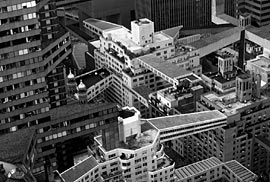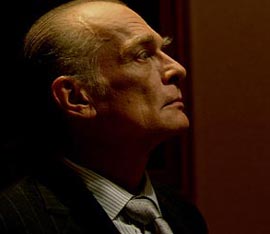
The Franklin Abraham from 31st of January In collaboration with |
| Jonah Freeman’s work examines a variety
of ideas and emotions surrounding the contemporary urban landscape.
His recent projects have focused on the urban interior as theatrical
space and the movement through those environments as a montage of phantasmagorical
fantasy worlds. Freeman’s work oscillates between film, photography, drawing, text and installation. In his new project, The Franklin Abraham, Freeman takes a city enclosed in a single structure as a platform for several interconnected bodies of work. |
 |
|
| The Franklin Abraham is the result of an
ambitious real estate project that has lasted over two hundred years.
The structure began under the auspices of industrialist Maxwell Blum
during the Pale Blue Epoch of metropolitan development. It started
as a residential tower designed in the once fashionable rococo-moderne
style
only to grow into the hybrid monstrosity that exists today. The building expanded into a radical architectural development that encompasses residential, retail, manufacturing, commercial industry, government and entertainment in a single structure. It currently houses 2 million inhabitants, is a mile and half wide, two miles long and, in places, over 150 stories tall. Involving several hundred thousand workers and thousands of architects, the construction has spanned several generations, with the result that the total design and program of the structure has become incoherent and incongruent. |
||
|
The primary work in the exhibition is a film produced by Fine Arts Unternehmen Film+Video. It is a partial glimpse into the present state of the society within The Franklin Abraham. The cinematic structure is modelled after the sprawling nature of the building. The film offers fragments of narrative that it explores briefly and then leaves behind: a despondent teenage girl and her older newspaper-stealing boyfriend; a timid office worker on a date with a sinister-looking romeo; a bored, subterranean youth gang; the tribulations of the family that runs the mega-corporation that owns the building and more. The camera gives a voyeuristic and indifferent perspective as it moves through the corridors and passageways of the structure painting a broad picture of a late-capitalist community. | |
